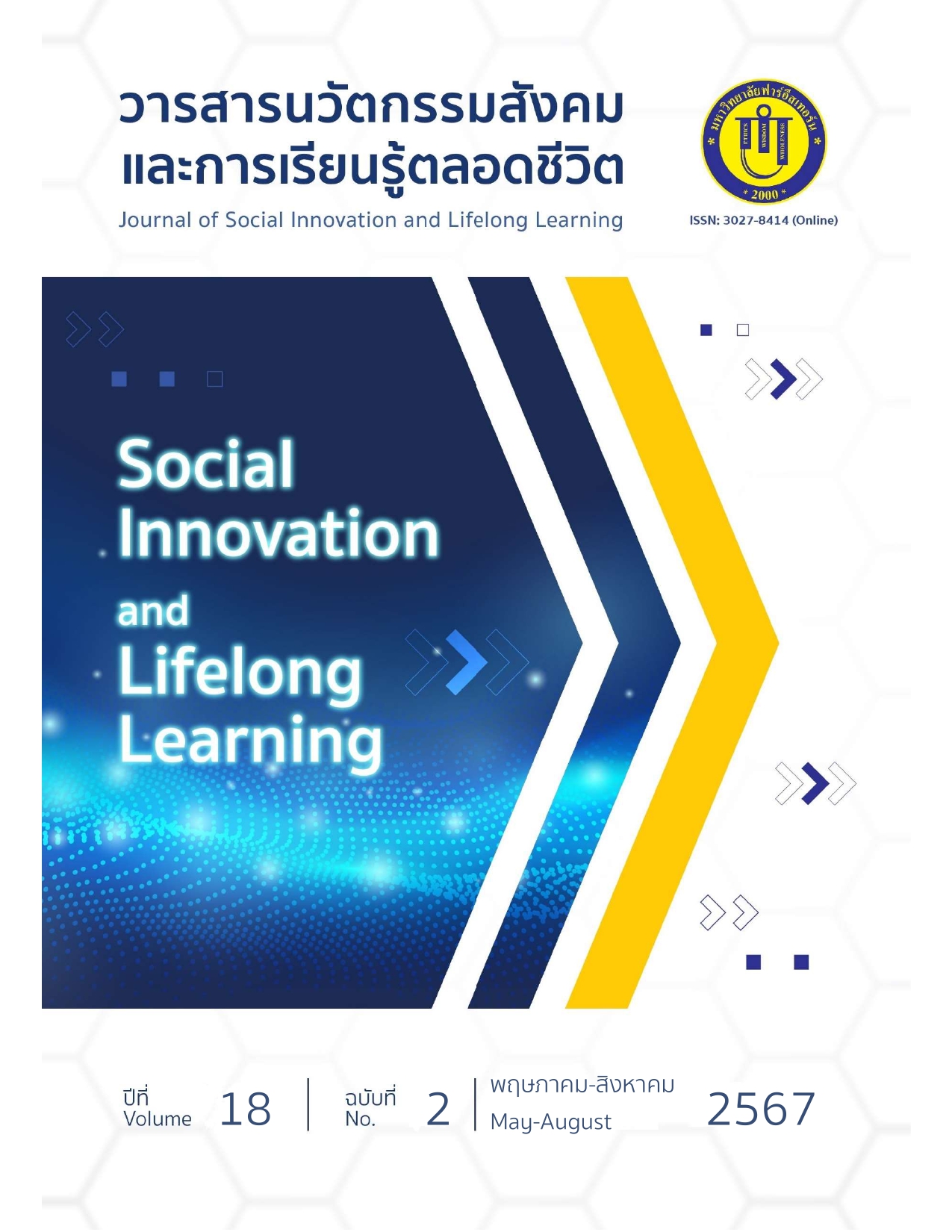The Role of Xiaomi Electronic Products in Driving China's Soft Power
Main Article Content
Abstract
The following research aims to study the role and significance of China's soft power initiatives, focusing on the strategies used to promote Xiaomi's electronic products and China's overall soft power efforts. This research employs a document-based research methods, analyzing 24 articles from academic journals, related research papers, and credible online sources. The data was gathered from electronic books. Subsequently, analyzed data by classification methods to identify relationships among different data sets, and summarize the findings. The research results reveal that, despite Chinese companies receiving support from the government through various policies, this support constitutes only a part of the broader initiative to promote development. From studying the role and importance of Xiaomi as a company and brand, it is evident that competitive strategies play a crucial role in driving business forward. Xiaomi has effectively utilized appropriate and efficient strategies, particularly in establishing a presence in the e-commerce world. Although the Xiaomi company has taken a short period of time to grow, but Xiaomi could become a key factor in driving China’s soft power through electronic technology. The growth of Xiaomi not only reflects rapid development in marketing but also helps to build good business relations between China and other countries which also improves China’s image. Xiaomi products also meet the company's needs and the demands of the global market both within and outside the country.
Article Details

This work is licensed under a Creative Commons Attribution-NonCommercial-NoDerivatives 4.0 International License.
1. Any views and comments in the Journal of Social Innovation and Lifelong Learning are the authors’ views. The editorial staff have not to agree with those views and it is not considered as the editorial’s responsibility.
2. The responsibility of content and draft check of each article belongs to each author. In case, there is any lawsuit about copyright infringement. It is considered as the authors’ sole responsibility.
3. The article copyright belonging to the authors and The Far Eastern University are copyrighted legally. Republication must be received direct permission from the authors and The Far Eastern University in written form.
References
เกียรติอนันต์ ล้วนแก้ว. (2565). Soft Power คืออะไรในมุมมองของเศรษฐศาสตร์. https://www.bangkokbiznews.com/columnist/1000787
ชุติพร แสงภู่. (2565). อิทธิพลของภาพลักษณ์ การรับรู้คุณค่า การสนับสนุนทางสังคมที่มีผลต่อความผูกพันของลูกค้า ส่งผลให้เกิดความไว้วางใจต่อแบรนด์ และพฤติกรรมการบอกต่อสินค้าแบรนด์ Xiaomi (เสียวหมี่) ในเขตกรุงเทพมหานคร [วิทยานิพนธ์ปริญญามหาบัณฑิต, มหาวิทยาลัยมหิดล]. https://archive.cm.mahidol.ac.th/bitstream/123456789/4859/1/TP%20MM.052%202565.pdf
ดารารัตน์ เที่ยงธรรม. (2559). ปัจจัยที่มีผลเชิงบวกต่อความตั้งใจซื้อสมาร์ทโฟนของผู้เข้าชมงานโมบายเอ็กซ์โป 2559 [การค้นคว้าอิสระมหาบัณฑิต, มหาวิทยาลัยกรุงเทพ]. http://dspace.bu.ac.th/handle/123456789/2247
บล็อคนอน. (2558). ตำนานชีวิต Xiaomi จากนักโมรอมสู่ผู้ผลิตสมาร์ทโฟน กับแผนการสร้างอาณาจักร IoT. https://www.blognone.com/node/68222.
ปริญ ลักษิตานนท์. (2544). การวิเคราะห์พฤติกรรมผู้บริโภค (พิมพ์ครั้งที่ 2). กรุงเทพมหานคร: เหรียญบุญการพิมพ์.
พรภวิษย์ หล้าพีระกุล และ ปารมิตา แซ่เตียว. (2564). การเปลี่ยนผ่านนโยบาย “อำนาจอ่อน” สู่ “อำนาจแหลมคม” ของจีนในศตวรรษที่21. MFU Connexion: Journal of Humanities and Social Sciences, 10(2), 79-92. https://so05.tci- thaijo.org/index.php/MFUconnexion/article/view/253339
พรศิริ วิรุณพันธ์. (2567). การพัฒนากลยุทธ์การตลาดดิจิทัลเพื่อสร้างความได้เปรียบทางการแข่งขัน. มนุษยสังคมสาร (มสส.), 22(1), 161-180. https://so03.tci- thaijo.org/index.php/jhusoc/article/view/272398
พิชชาพัชร เอื้อสถาพรกิจ. (2563). การศึกษาการตลาดของ Xiaomi [วิทยานิพนธ์ปริญญามหาบัณฑิต, มหาวิทยาลัยศิลปากร].
วุฒิกร สินธุวาทิน. (2567). เปิดวิสัยทัศน์ อเล็กซ์ ถัง กับการกิจการแจ้งเกิดเสียวหมี่ในประเทศไทย “มีโอกาสเห็นรถเสียวหมี่มาวิ่งบนท้องถนนในเมืองไทย”. https://www.brandage.com/article/37836
ศูนย์วิจัยกสิกรไทย. (2561). Made in China 2025 ปฎิวัติแดนมังกรด้วยนวัตกรรม. https://www.kasikornbank.com/th/business/sme/KSMEKnowledge/article/KSMEAnalysis/DocumeDoc/Chinese-Revolution-2025-Innovation.pdf
Canalys. (2021). Global wearable band shipments up 6% as the market shifts to wristwatches. https://www.canalys.com/newsroom/
Canalys. (2024). Global smartphone market kicked off 2024 with a robust 10% growth in Q1. https://www.canalys.com/newsroom/global-smartphone-market-q1-2024
Counterpoint. (2024). Global Smartphone Market Grows 8% YoY In Q2 2024; ASP Reaches Highest Level For a Second Quarter. https://www.counterpointresearch.com/insights/global-smartphone-market-grows-8-yoy-in-q2-2024-asp-reaches-highest-level-in-a-second-quarter/
CUI M., Liu Y., & Qian J. (2021). Achieving continuous interaction with users: An in-depth case study of Xiaomi. Journal of Engineering and Technology Management, 60, 43-48. https://doi.org/10.1016/j.jengtecman.2021.101630
Depa Thailand. (2019). Lessons from China on manpower development and digital innovation to the global market. https://www.depa.or.th/en/article-view/innovation-articlev2
Immanuel Martinez. (2024). Porter’s Five Forces Analysis of Xiaomi. https://www.konsyse.com/articles/porters-five-forces-analysis-of-xiaomi/#google_vignette
Kang Min Jung. (2016). Effect of internal resources empowerment strategy to telecommunication firm's growth: The case of Huawei [Master’s thesis, Seoul National University]. https://hdl.handle.net/10371/129110
Kapferer, J. N. (2012). The New Strategic Brand Management: Advanced Insights and Strategic Thinking (5th Ed.). Great Britain: Kogan Page Limited.
Krongchan, C. (2020). Analyze the Chinese economy - society "Technology in the 5.0 era and the way of life of Chinese people today". http://www.ias.chula.ac.th
Kotler, P. (1997). Marketing Management: Analysis, Planning, Implementation and Control. (9th Ed.). New Jersey: Prentice-Hall International Inc.
Medium. (2017). Xiaomi CEO Lei Jun: How Xiaomi Turned the Tables. https://medium.com/@pandaily/xiaomi-ceo-lei-jun-how-xiaomi-turned-the-tables-964331db3397
Michał Nawrocki. (2024). Xiaomi Holds Strong in Fierce Smartphone Market Competition. https://smartphonemagazine.nl/en/2024/05/22/xiaomi-holds-strong-in-fierce-smartphone-market-competition/
Moore, J. F. (1996). The Death of Competition: Leadership and Strategy in the Age of Business Ecosystems. HarperCollins.
Nipa Technology. (2022). Forget it's from China! Analyze Xiaomi brand online marketing plan. https://nipa.co.th/
Nye, J. S. (2005). The Changing Nature of Power. Soft Power: The means to success in word politics. New York: Public Affairs.
Online Organizers. (2020). Xiaomi founder Lei Jun announced his vision in the next 10 years. https://mgronline.com/cyberbiz/detail/9630000084986
Osterwalder, A., Pigneur, Y., Bernarda, G. & Smith, A. (2014). Value Proposition Design: How to create products and services customers want Get started with value proposition design. John Wiley & Sons.
Ries, A., & Trout, J. (2001). Positioning: The Battle for Your Mind (20th Anniversary Edition). United States of America: McGraw-Hill.
Royal Thai Embassy, Beijing. (2020). China Economy Basics. https://thaiembbeij.org/
Techsauce. (2015). Xiaomi reveals plans to invest in hundreds more startups to create the perfect ecosystem. https://techsauce.co/news/xiaomi-will-invest-in-100-more-startups
USC US-China Institute. (2007). Hu Jintao, 17th Party Congress Report 2007. https://china.usc.edu/
Wilson Center. (2014). China’s soft power campaign. Mapping China’s cultural genome. https://www.wilsoncenter.org/chinas-soft-power-campign
Xue-Lian, P., Myeong-Cheol, C., Xian-Fa, S., Joo-Hee, H. & Xing-Chen, P. (2021). A Study on the Organizational Culture and Performance of Xiaomi Corporation. International Journal of Culture Technology, 9(1), 52-57. https://doi.org/10.17703/IJACT.2021.9.1.52
Zhao, W. & Yi, L. (2022). Research on the evolution of the innovation ecosystem of the Internet of Things: A case study of Xiaomi (China). Procedia Computer Science, 199, 56-62. https://doi.org/10.1016/j.procs.2022.01.008

